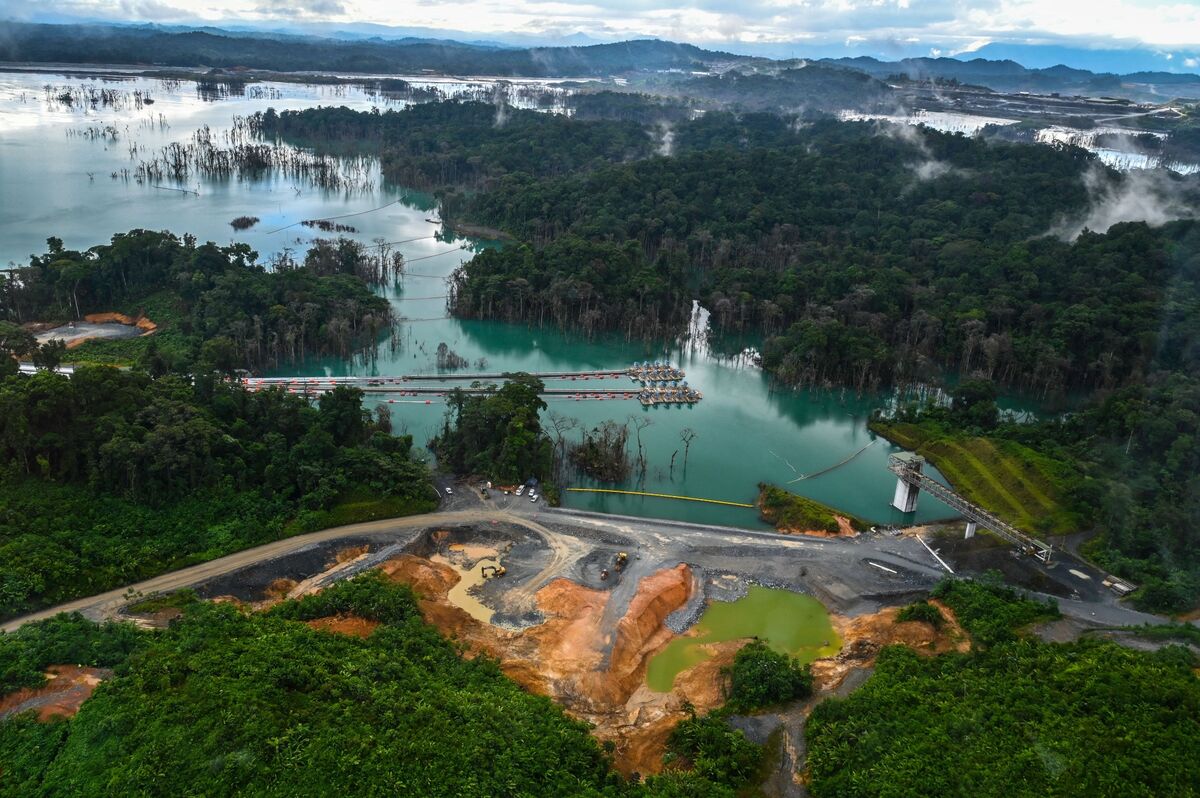Panama pledges to meet the fiscal goals of the country as the Cobre mine in Donoso pictured above will only produce half of the money that Panama had hoped for due to its closure. They were expecting 5% growth in the country but now it may only be 2.5% unless the new Government on May 5 when elected gets moving on some serious money making projects. Keeping Panama’s investment-grade status will be of prime importance to the new Government to keep the investors happy. Panamanian officials are meeting rating firms this week to reinforce their commitment to fiscal and growth targets amid rising investor concern about the country keeping its investment-grade status. “We are on a downward path — in a progressive way — in the fiscal consolidation, and on an upward path in the growing of the economy,” Deputy Finance Minister Jorge Almengor said Thursday in an interview on the sidelines of the International Monetary Fund and World Bank meetings in Washington. “We hope that they understand.” I still have a feeling that mining will one day be back in Panama, but environmentally, monetarily or managerially changed somehow for the good of everyone involved. We have some folks who have sent some good suggestions which I will post here at various times. This idea from Tristan.
In the heart of Panama, the Cobre Panama mine stands as a beacon of industrial strength, representing one of the largest copper production sites globally. As the mine plays a crucial role in Panama's economy, a growing discourse suggests a bold move—nationalizing 51% of the mine. This proposal envisions a unique division of ownership, with stakes held both by the Panamanian government and its citizens. This article explores the viability and potential impacts of such a nationalization.
Nationalization isn't a novel idea but comes with a complex legal landscape. In Panama, this would require amendments to existing laws and potentially the constitution, to allow the government to take ownership of a majority stake in what is currently a private enterprise. International precedents vary—while countries like Bolivia have seen relative success, others have faced economic backlash and litigation. The key would be ensuring compliance with international investment treaties and providing fair compensation to avoid disputes.
The economic implications of nationalizing a major mine are profound. On one hand, direct control over a significant portion of mineral wealth could boost government revenues and potentially lead to greater economic independence. On the other hand, it risks alienating foreign investors and could disrupt the operational efficiencies that multinational expertise brings. A careful economic analysis suggests that for success, Panama would need to maintain high standards of transparency and governance to manage the mine effectively under new ownership structures.
Political appetite for nationalization must align with public opinion. Given the current global tilt towards economic nationalism and sovereignty, there might be substantial support for such a move in Panama. However, political leaders would need to tread carefully, balancing national interests with international relations, particularly with countries involved in the existing ownership of the mine.
The proposal of splitting the 51% stake between ordinary Panamanians and the government is revolutionary. It would not only democratize wealth from Panama’s natural resources but also embed a sense of ownership and responsibility across the populace. This model would require robust systems to handle logistics, distribution of profits, and overall management, ensuring that the mine's operations remain world-class.
The idea of nationalizing 51% of the Cobre Panama mine presents both significant opportunities and notable risks. For Panama, this could mean a reassertion of national control over critical economic assets and a redistribution of wealth that could empower its citizens. However, this path demands careful planning, widespread public and political support, and stringent safeguards to ensure that the transition bolsters the nation’s economy without sacrificing the operational excellence that the mine is known for.
As Panama stands at this crossroads, the decision to nationalize could set a precedent for how resources are managed and profits are shared, not just within the nation but as an example to others in the region. The journey towards nationalization, if taken, will require a concerted effort from all sectors of society to turn potential into prosperity.
